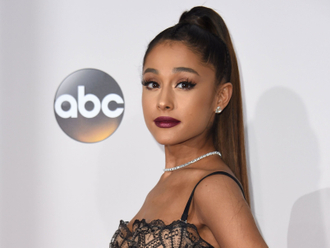
In a recent interview with i-D magazine, Danish pop star Mo outlined the reasons behind her delayed second album. “Everything changed after Lean On,” she says, referring to the global success of her featured vocal on Major Lazer and DJ Snake’s 2015 banger.
“So many people have opinions and try to guide you, and everyone has the best intentions, but it makes it harder to cut through the noise.”
The video broke the two-billion mark on YouTube, yet Mo has struggled with the realities of being an accessory to a hit and the pressures that come with it.
As a rising artist, a feature on an established act’s song is a once-in-a-lifetime opportunity and while some have alchemised it into success, others have become defined by it.
“Shoehorning a developing artist on to a song by a bigger act only works when the featured singer has a clear vision for who they are,” says Robbie Daw, news correspondent for US station Sirius XM Volume’s Feedback. So for every Bruno Mars (BoB’s Nothin’ on You), there’s a Mr Hudson after Jay-Z and Kanye West’s Why I Love You, an Ella Eyre after Rudimental’s Waiting All Night or a Kimbra after Gotye’s Somebody That I Used to Know.
In Mo’s case, her desired trajectory was in conflict with the success of Lean On. Her debut album, No Mythologies to Follow, arrived a year earlier and was more stripped down compared to the electronically cinematic delivery of Major Lazer.
Post-Lean On, her recent singles have seen her collaborate with LA-dwelling radio big-hitters Ryan Tedder, Benny Blanco and Cashmere Cat but the sense was that the top-tier collaborators were looking for instant repeat success rather than matching Mo’s solo artistic vision. Her recent, more stripped-back EP When I Was Young speaks more to the earliest iteration of Mo, but would surely confuse anyone whose initial encounter with her came via Lean On. “It opened all these doors,” she told Entertainment Weekly. “I wanted to find my own sound as well.”
The road to features is paved with good intentions. It’s David collaborating with Goliath, and can be mutually beneficial. For the upcoming artist, it’s a chance to shine, hitching a ride to a moving wagon. For the larger artist, it’s a two-fold win: it’s cost-effective to feature a neophyte over a seasoned singer with deep pockets. And if the newbie blows up, they too are part of the circus. The real challenge, though, is what happens to the newer act after that. “For every Bruno, there are a dozen feature artists left twitching in pop’s scrapheap,” Daw says. Is it worth the risk? Certainly. But proceed with caution.













